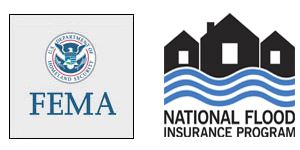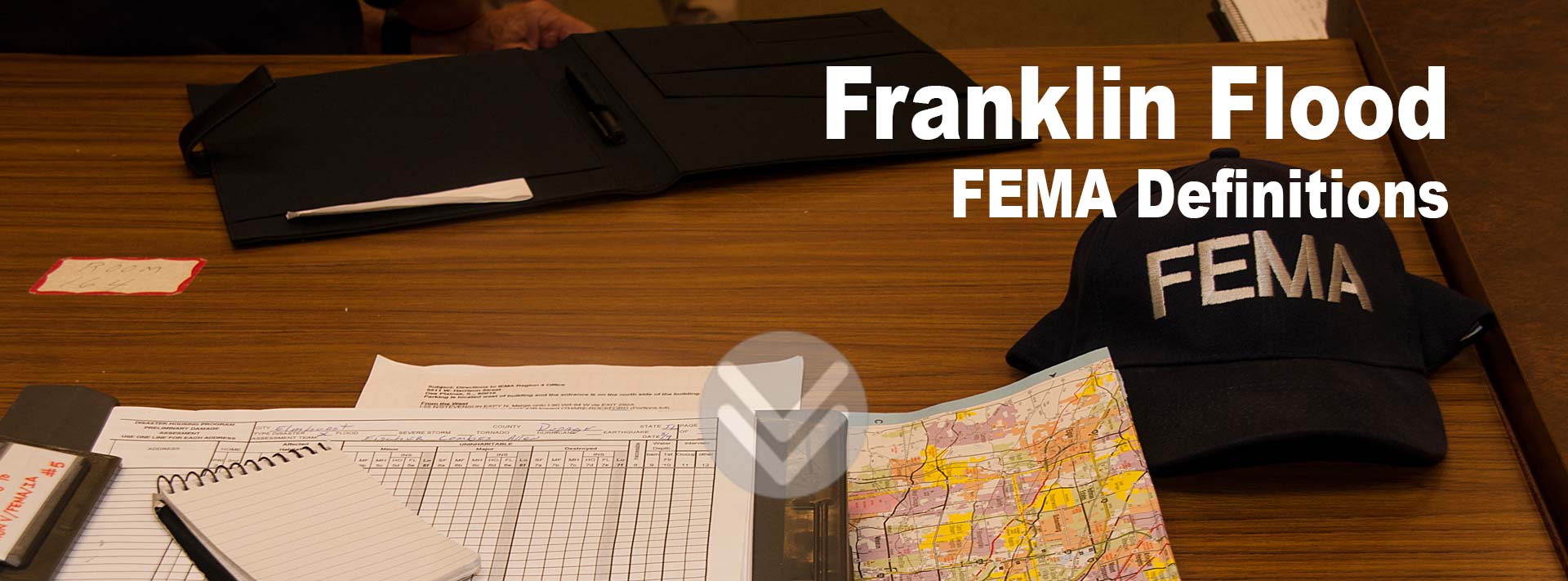| A - B | C | D - F | G - L | M - N | O - R | S - Z |
• Scheduled Building Policy--A policy that requires a specific amount of insurance to be designated for each building and its contents.
• Section 1316--Section of the National Flood Insurance Act of 1968, as amended, which states that no new flood insurance coverage shall be provided for any property that FEMA finds has been declared by a duly constituted state or local zoning authority or other authorized public body to be in violation of state or local laws, regulations, or ordinances that are intended to discourage or otherwise restrict land development or occupancy in flood-prone areas.
• Severe Repetitive Loss (SRL) Properties--NFIP-insured buildings that, on the basis of paid flood losses since 1978, meet either of the loss criteria described on page SRL 1. SRL properties with policy effective dates of January 1, 2007, and later will be afforded coverage (new business or renewal) only through the NFIP Servicing Agent’s Special Direct Facility so that they can be considered for possible mitigation activities.
• Shear Walls--Walls used for structural support but not structurally joined or enclosed at the ends (except by breakaway walls). Shear walls are parallel, or nearly parallel, to the flow of the water and can be used in any flood zone.
• Sheet Flow Hazard--A type of flood hazard with flooding depths of 1 to 3 feet that occurs in areas of sloping land. The sheet flow hazard is represented by the zone designation AO on the FIRM.
• Single Adjuster Program--A procedure implemented among the NFIP, various wind pools, and WYO Companies to allow one adjuster to represent both carriers in adjusting a combined wind-water loss where the NFIP has the flood coverage and another carrier has the wind coverage.
• Single Building--A building that is separated from other buildings by intervening clear space or solid, vertical, load-bearing division walls.
• Single-Family Residence--A residential single family dwelling. Incidental office, professional, private school, or studio occupancies, including a small service operation, are permitted if such incidental occupancies are limited to less than 50 percent of the building's total floor area.
• Solid Perimeter Foundation Walls--Walls that are used as a means of elevating a building in A Zones and that must contain sufficient openings to allow for the unimpeded flow of floodwaters more than 1 foot deep.
• Special Flood Hazard Area (SFHA)--An area having special flood, mudflow, or flood-related erosion hazards, and shown on a Flood Hazard Boundary Map or a Flood Insurance Rate Map as Zone A, AO, A1-A30, AE, A99, AH, AR, AR/A, AR/AE, AR/AH, AR/AO, AR/A1-A30, V1-V30, VE, or V. For the purpose of determining Community Rating System premium discounts, all AR and A99 zones are treated as non-SFHAs.
• Standard Flood Insurance Policy--Dwelling Form--Policy issued to insure a building and/or residential contents on a single-family or a 2-4 family dwelling.
• Standard Flood Insurance Policy--General Property Form--Policy issued to insure a building and/or contents on other residential or non-residential buildings.
• Standard Flood Insurance Policy--Residential Condominium Building Association Policy (RCBAP)--Policy issued to insure a residential condominium building and all units within the building, provided that the building is located in a Regular Program Community and at least 75 percent of the total floor area is residential.
• Start of Construction--For other than new construction or substantial improvements, under the Coastal Barrier Resources Act, this is the date the building permit was issued, provided that the actual start of construction, repair, rehabilitation, addition, placement, or other improvement was within 180 days of the permit date. The actual start means either the first placement of permanent construction of a building on site, such as the pouring of a slab or footing, the installation of piles, the construction of columns, or any work beyond the stage of excavation; or the placement of a manufactured (mobile) home on a foundation. For a substantial improvement, actual start of construction means the first alteration of any wall, ceiling, floor, or other structural part of a building, whether or not that alteration affects the external dimensions of the building.
• Stock--Merchandise held in storage or for sale, raw materials, and in-process or finished goods, including supplies used in their packing or shipping. "Stock" does not include any property not covered under "Section IV. Property not Covered" of the General Property Form, except the following:
◦ Parts and equipment for self-propelled vehicles;
◦ Furnishings and equipment for watercraft;
◦ Spas and hot-tubs, including their equipment; and
◦ Swimming pool equipment.
• Submit-for-Rate--An application for flood insurance on a building for which no risk rate is published in the Flood Insurance Manual. Insurance coverage can be obtained only after the NFIP has approved the application and has established the risk premium rate.
• Substantial Damage--Damage of any origin sustained by a building whereby the cost of restoring the building to its before-damaged condition would equal or exceed 50 percent of the market value of the building before the damage occurred.
• Substantial Improvement--Any reconstruction, rehabilitation, addition, or other improvement of a building, the cost of which equals or exceeds 50 percent of the market value of the building before the "start of construction" of the improvement. Substantial improvement includes buildings that have incurred "substantial damage," regardless of the actual repair work performed. The term does not, however, include either any project for improvement of a building to correct existing state or local code violations or any alteration to a "historic building," provided that the alteration will not preclude the building's continued designation as a "historic building."
• Suspension--FEMA's removal of an NFIP participating community from the program because the community has not enacted and/or enforced the proper floodplain management regulations required for participation.
T
• Tentative Rates--Unpublished NFIP rates used to issue policies for applications that fail to provide the NFIP with valid actuarial rating information.
• Travel Trailer--Under the NFIP, a travel trailer can be considered a building only if it is without wheels, built on a chassis and affixed to a permanent foundation, and regulated under the community's floodplain management and building ordinances or laws.
• 2-to 4-Family Residence--A residential building (excluding hotels and motels with normal room rentals for less than 6 months' duration) containing no more than four dwelling units. Incidental occupancies such as office, professional, private school, or studio space are permitted if the total area of such occupancies is limited to less than 25 percent of the total floor area within the building.
U
• Underground Building--A building for which 50 percent or more of the actual cash value, including machinery and equipment that are part of the building, is below ground.
• Unfinished Area--An enclosed area that is used only for the parking of vehicles, building access, or storage purposes and that does not meet the definition of a finished (habitable) area. Drywall used for fire protection is permitted in unfinished areas.
• Unit--A single-family unit owned by the policyholder in a condominium building.
V
• Valued Policy--A policy in which the insured and the insurer agree on the value of the property insured, that value being payable in the event of a total loss. The Standard Flood Insurance Policy is not a valued policy.
• Variance--A grant of relief by a participating community from the terms of its floodplain management regulations.
W
• Waiting Period--The time between the date of application and the policy effective date.
• Walled and Roofed--A building that has two or more exterior rigid walls and a fully secured roof and that is affixed to a permanent site.
• Wave Height Adjustment--A measurement that is added to the base flood elevation for V Zones shown on the Flood Insurance Rate Map published prior to 1981. For coastal communities, the base flood elevation shown on Flood Insurance Rate Maps published prior to 1981 are still-water elevations, which include only the effects of tide and storm surge, and not the height of wind-generated waves.
• Write Your Own (WYO) Program--A cooperative undertaking of the insurance industry and FEMA begun in October 1983. The WYO Program operates within the context of the NFIP and involves private insurance carriers who issue and service NFIP policies.
Z
• Zone--A geographical area shown on a Flood Hazard Boundary Map or a Flood Insurance Rate Map that reflects the severity or type of flooding in the area.

x
x
Franklin for Agent Toolbox
Flood Insurance is Affordable Again:
The Homeowner Flood Insurance Affordability Act of 2014 (HFIAA), which went into effect July 1, 2014, restores grandfathering and much of the previous affordable rate structure and more reasonable regulations. For the consumer this means that NFIP Flood Insurance is affordable and obtainable again.
For information talk to a licensed Franklin Flood Insurance Agent TODAY

Franklin Flood, LLC, 120 East Uwchlan Ave, Suite 101, Exton, PA 119341 Toll Free 888 567 9600 Fax 610 524 0900


This site and it's contents are protected by United States and International copyright law. Reproduction without permission is prohibited.




